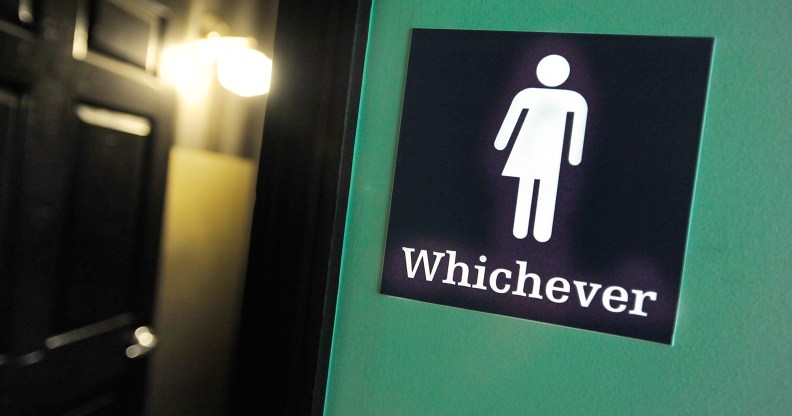Gender neutral pronouns: What are preferred pronouns?

A gender neutral sign. (Photo by Sara D. Davis/Getty Images)
A gender neutral sign. (Photo by Sara D. Davis/Getty Images)
Gender neutral pronouns are terms that an individual may prefer to be addressed by, such as ‘they’, ‘ze’ and ‘xe’.
Individual can choose their preferred pronoun, and it’s not limited to just “he” and “she.” People can choose gender neutral pronouns too.
In this article, we discuss definitions, examples of gender neutral pronouns, and workplaces/universities that are giving staff/students a platform to choose their identity.
Watch the video below about how to tell people about your preferred pronoun:
Definition of preferred pronouns
A pronoun is a word that is used to refer to something or someone. In the English language, according to the dictionary, “he” should be used for males, “she” for females, and “they” for a group of people or if you’re unaware of someone’s gender.
For example, if your friend says they went out with a colleague, and they didn’t specify their gender, you may respond with, “What’s their name?” (Also, you’ll notice that we referred to your hypothetical friend as “they” because their gender was, indeed, unspecified.)
Ze and Hir and are popular gender neutral pronouns
However, moving away from the dictionary’s definition, people are becoming more tolerant and understanding of how people identify. A preferred pronoun is when someone chooses to be addressed by any of those mentioned pronouns (and more) regardless of the individual’s sex or gender.
An individual can pick and choose how they wish others to address them, and the point of a preferred pronoun is that each person has a choice of their identity.
gender neutral pronoun definition

Gender neutral pronouns are ways to address someone (or something) without linking it to their gender.
Examples of gender neutral pronouns
- It/it/its
- They/them/theirs
- Ze/zie/hir/hirs
- Ve/ver/vis
- Xe/xem/xyr
While cisgender people (those whose gender matches their sex) will likely keep their original pronouns, transgender people often have their preferred pronoun changed between “he” or “she.”
Non-binary people, on the other hand, don’t identify as a male or female and they’ll often choose gender neutral terms such as those mentioned above. The most popular gender neutral pronouns are currently “they/them” and “ze/hir.”
Gender neutral pronouns are most commonly used among non-binary, trans and gender fluid people.
And gender fluid people may change their gender and pronoun through time, picking various preferred pronouns.
Companies and organisations using preferred pronouns
Around the world, companies and organisations are waking up to the sensitivity surrounding an individual’s pronoun and are therefore embracing the changes that have come into play in the last few decades. These companies give individuals a chance to pick gender neutral pronouns.
For this reason, workplaces are asking their employees what their preferred pronoun is.
PinkNews
Of course, PinkNews embraces diversity and equality so we give staff a platform to let people know their gender identity.
If you’ve ever emailed us, you may have noticed that each PinkNews employee has their preferred pronouns in their email signature.
Lambda Legal
Similarly, Lambda Legal, a non-profit LGBT organisation, gives staff the option to “designate pronouns to avoid misgendering and to give visibility to the idea that all gender identities are valid and deserving of respect.”
JustGiving
The trusted online fundraiser JustGiving is another organisation that believes in preferred pronouns.
Just like PinkNews, their staff have their pronouns in the signature of their emails.
Brighton Council
Brighton, being the gay capital of England, has a council that embraces gender identity as well.
Brighton Council encourages its staff to wear pronoun badges as part of trans awareness campaign.
HSBC Bank
HSBC Bank offers its transgender customers a chance to pick gender neutral titles instead of the tradition Mr, Mrs and Ms.
Customers now have the choice of ten different titles such as, “Mre” and “Ind” which stands for “mystery” and “individual” respectively.
Other options include “M”, “Mx”, “Sai”, “Msc”, “Msr” and “Myr.”
Universities using preferred pronouns
So far, at least 255 colleges and universities in the United States allow students to choose their name and gender on campus records.
In the United Kingdom, some universities have started giving trans people a platform and embraced gender neutrality.
Edinburgh University and Durham University, for example, have both taken steps to supports trans and non-binary students by offering badges out with preferred pronouns.

